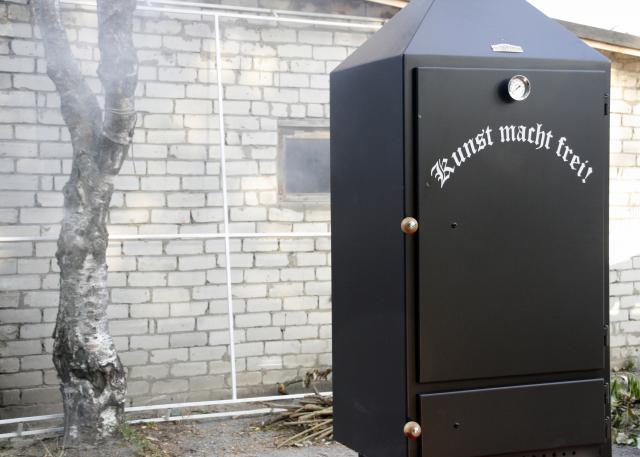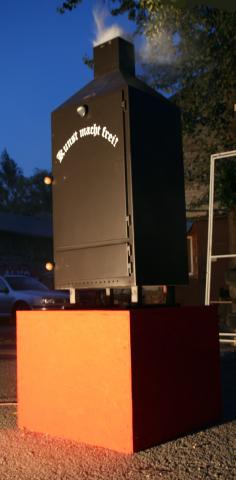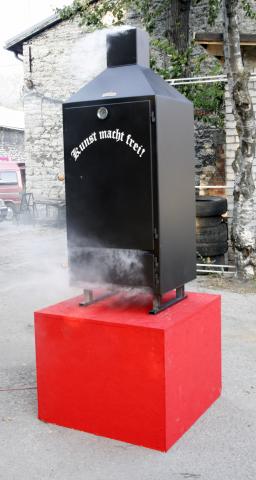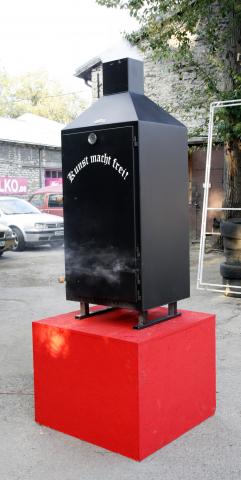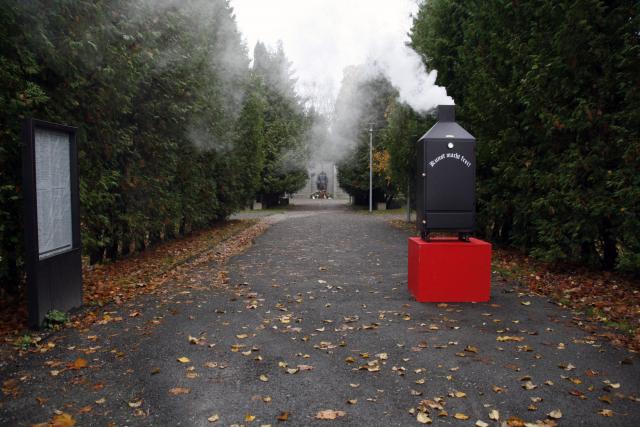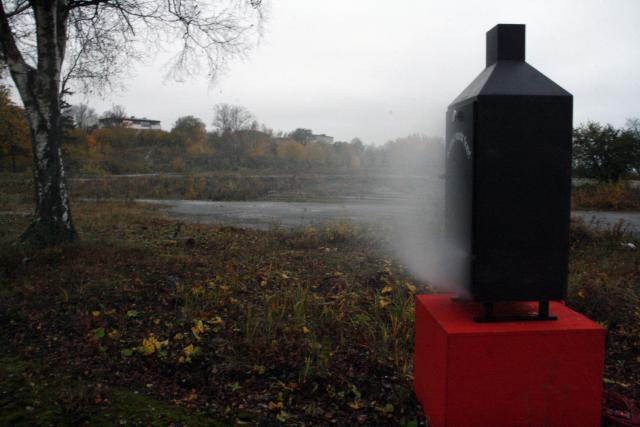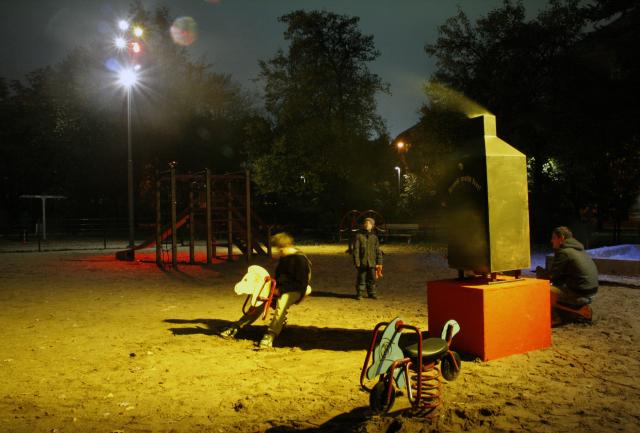Temporal and geographic distance from the hot spots of civilization grants a certain historical innocence that excuses touching on social taboos. Once, Murka transgressed by painting a Hitler moustache on a portrait of her grandmother and “KUNST MACHT FREI” above a concentration camp museum gate. She likes the film “Lost in Translation”. I do not want to suggest that this film is in some way taboo. I think that the borders of taboos may be shifted in their translation from one culture to another, like other lines between the zones of comfort and discomfort, because curiosity has a tendency to shift the routine lines of restrictions. Much gets lost in translation between the languages of images and verbal languages, and this complicates the job of the art critic. There are also losses in translation from one language of images to another. Murka paints monochrome black-and-white pictures. Does the world turn into a black-and-white TV when we remove the colour? Estonians do not generally dub foreign-language programmes; they prefer subtitles. This changes the perception of a film and opens up unanticipated ways of enjoying it. When an American or a Russian watches a film, they can experiment with the sound off, nose pegged, wearing rubber boots, or wrapped up in a blanket with a cup of hot tea – just as Murka loved to do as a child. Estonians have one more option: to remove the subtitles; in so doing they open their eyes to what had previously escaped attention. This is what is taught in the Tallinn film school where Murka (a graduate of Tallinn Art Academy) studies script writing. She chose this subject because she felt then that she was not nery good with words and, anyway, you have to be able to do a job after having learnt art. This painter, who stands out in contemporary Estonian art with a traditionally careful technique in oil painting and who belongs to the company of video artists as well, sees film stills and even subtitles as objects for painting. Some day an art teacher will start a lesson by saying: “Children, today we’re going to draw a TV.” That would be an unbearable violation of a cultural taboo. But children of the screen age want to.
Andri Ksenofontov
